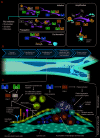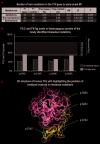Rare variants lowering the levels of coagulation factor X are protective against ischemic heart disease
- PMID: 31699787
- PMCID: PMC7327651
- DOI: 10.3324/haematol.2019.237750
Rare variants lowering the levels of coagulation factor X are protective against ischemic heart disease
Figures



Similar articles
-
The protective effect of ischemic postconditioning against ischemic injury: from the heart to the brain.J Neuroimmune Pharmacol. 2007 Dec;2(4):313-8. doi: 10.1007/s11481-007-9089-8. Epub 2007 Sep 18. J Neuroimmune Pharmacol. 2007. PMID: 18040849 Review.
-
[Alcohol as prevention of ischemic heart and cerebral disease?].Ugeskr Laeger. 1999 Oct 11;161(41):5696-7. Ugeskr Laeger. 1999. PMID: 10565244 Danish. No abstract available.
-
Genetically reduced soluble epoxide hydrolase activity and risk of stroke and other cardiovascular disease.Stroke. 2010 Jan;41(1):27-33. doi: 10.1161/STROKEAHA.109.567768. Epub 2009 Nov 25. Stroke. 2010. PMID: 19940276 Clinical Trial.
-
[Important aim of statin therapy: ischemic cardiovascular event (stroke)].Ideggyogy Sz. 2008 Jul 30;61(7-8):239-43. Ideggyogy Sz. 2008. PMID: 18763479 Review. Hungarian.
-
Anti-ischemic activity of carnosine.Biochemistry (Mosc). 2000 Jul;65(7):849-55. Biochemistry (Mosc). 2000. PMID: 10951104 Review.
Cited by
-
Interorgan communication with the liver: novel mechanisms and therapeutic targets.Front Immunol. 2023 Dec 12;14:1314123. doi: 10.3389/fimmu.2023.1314123. eCollection 2023. Front Immunol. 2023. PMID: 38155961 Free PMC article. Review.
-
Gene-Environment Interactions for Cardiovascular Disease.Curr Atheroscler Rep. 2021 Oct 14;23(12):75. doi: 10.1007/s11883-021-00974-9. Curr Atheroscler Rep. 2021. PMID: 34648097 Free PMC article. Review.
-
Rare, Damaging DNA Variants in CORIN and Risk of Coronary Artery Disease: Insights From Functional Genomics and Large-Scale Sequencing Analyses.Circ Genom Precis Med. 2021 Oct;14(5):e003399. doi: 10.1161/CIRCGEN.121.003399. Epub 2021 Oct 1. Circ Genom Precis Med. 2021. PMID: 34592835 Free PMC article. Clinical Trial.
-
Use of a Genetic Variant Related to Circulating FXa (Activated Factor X) Levels to Proxy the Effect of FXa Inhibition on Cardiovascular Outcomes.Circ Genom Precis Med. 2020 Oct;13(5):551-553. doi: 10.1161/CIRCGEN.120.003061. Epub 2020 Aug 13. Circ Genom Precis Med. 2020. PMID: 33079601 Free PMC article. No abstract available.
-
ACE2 and TMPRSS2 variants and expression as candidates to sex and country differences in COVID-19 severity in Italy.Aging (Albany NY). 2020 Jun 5;12(11):10087-10098. doi: 10.18632/aging.103415. Epub 2020 Jun 5. Aging (Albany NY). 2020. PMID: 32501810 Free PMC article.
References
-
- Dahlbäck B. Blood coagulation. Lancet. 2000;355(9215):1627–1632. - PubMed
-
- Sharma A, Garg A, Borer JS, et al. Role of oral factor Xa inhibitors after acute coronary syndrome. Cardiology. 2014;129(4):224-232. - PubMed
-
- EINSTEIN Investigators. Bauersachs R, Berkowitz SD, et al. Oral rivaroxaban for symptomatic venous thromboembolism. N Engl J Med. 2010;363(26):2499-2510. - PubMed
-
- Mega JL, Braunwald E, Wiviott SD, et al. Rivaroxaban in patients with a recent acute coronary syndrome. N Engl J Med. 2012;366(1):9-19. - PubMed

